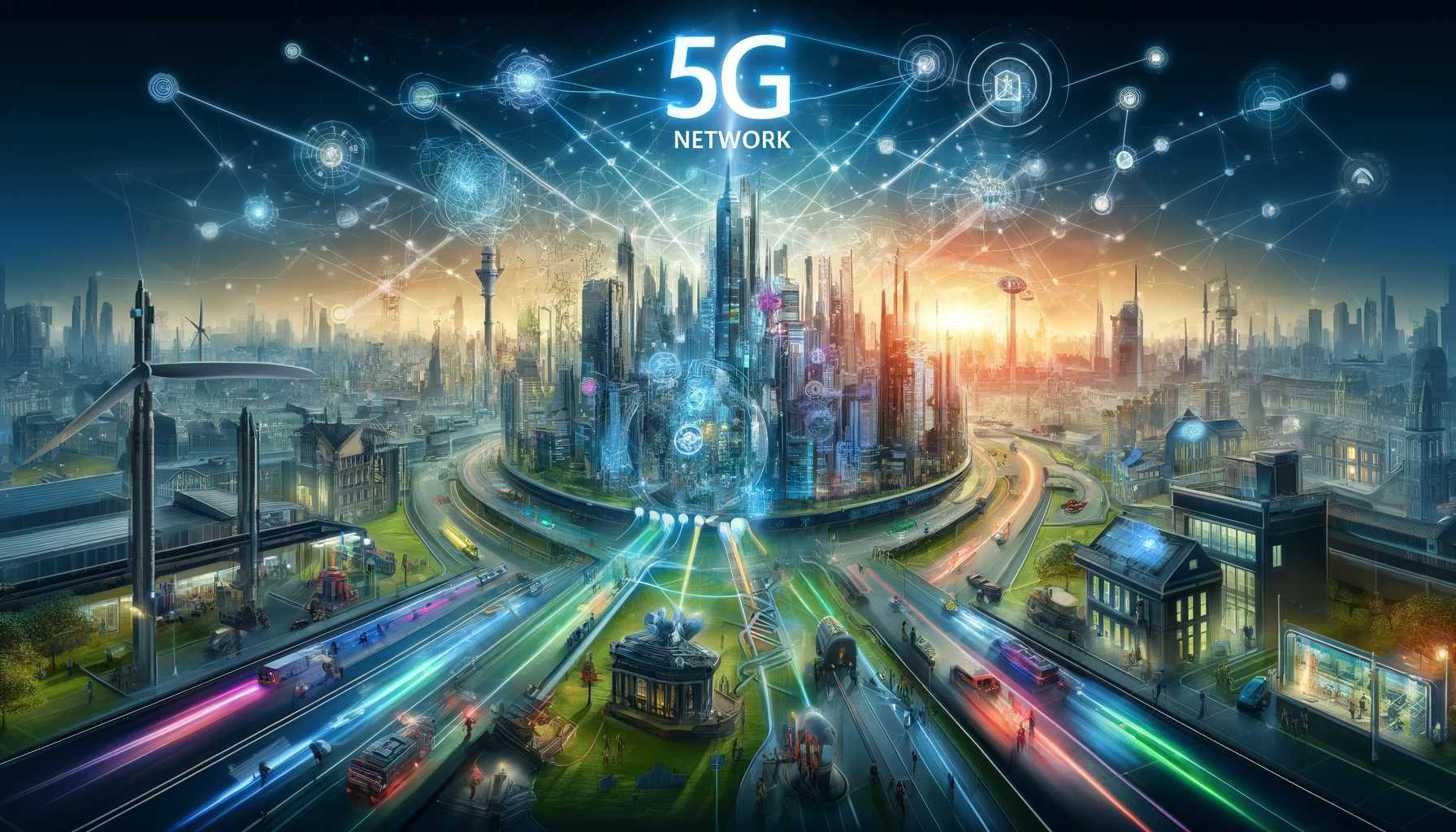5G: What is it?
The fifth generation of cellular networks is known as 5G. With speeds up to 100 times faster than 4G, 5G is giving consumers and companies previously unheard-of potential. Increased bandwidth, ultra-low latency, and faster connectivity are revolutionizing industries, improving daily lives, and progressing society. Services that were formerly thought to be futuristic like connected cars and traffic systems, e-health, and sophisticated mobile cloud gaming have already materialized.
The GSM (2G), UMTS (3G), and LTE (4G) mobile telecommunication protocols have been replaced by 5G. The 3GPP standards organization is in charge of development and standardization, which are ongoing processes that are not yet complete. The new communication standard extends well beyond mobile internet speed and digital phone technology. It is perceived as a reaction to the global rise in data traffic that is occurring as a result of digitalization, which is fueled by big data, streaming, and the Internet of Things (IoT). In terms of data speed, network capacity, response time, dependability, and data security, 5G is anticipated to set new benchmarks and make real-time data communication possible for the first time. Numerous new application opportunities, including in the domains of IoT and self-drivingcars, and Industry 4.0 (IIoT).
We can contribute to building a more intelligent, secure, and sustainable future using 5G technology.
Why is 5G unique?
The same radio frequencies that are already utilized by satellite communications, Wi-Fi networks, and smartphones are also used by 5G, but it makes technology far more advanced.
Beyond the ability to download an entire HD movie to your phone in a matter of seconds (even from a packed stadium), the true goal of 5G is to reliably and lag-free connect everything so that real-time measurement, comprehension, and management are possible. This has a ton of promise, and when we work together, we can make it even better.
What is the operation of 5G?
The current generation of 5G technology typically still depends on an active 4G network to function; it is not stand-alone. This is known as 5G non-standalone (5G NSA) for this reason. Only autonomous networks (5G standalone, 5G SA), improved technology installed behind transmission towers, and suitable devices will allow 5G to reach its full potential.
Greater frequency ranges enable data transfer at a quicker pace.
5G uses far more antennas and new frequency ranges than LTE. Although LTE mostly uses bands below 3 GHz, 5G has a frequency range of 6 GHz and will eventually expanded to include bands from 24 GHz to a maximum of 100 GHz. This indicates that a substantial increase in bandwidth is available for data transfer. But much like LTE, 5G also needs a lot more base stations to be widely available. This is so that more data may be transmitted over a frequency, the higher the frequency. However, the range also falls proportionately at the same time.
Evolution of 5G
Since the release of the first mobile technology generation, a lot has changed.
- Briefcase-sized phones and quick talks among a relatively small group of professionals typified the 1G period.
- The need for mobile services increased in the years before 2G and never stopped.
- The 3G era was characterized by smartphones that were small enough to fit in your pocket, SMS, and mobile internet access.
- YouTube, app shops, and cellphones are all possible because of 4G.
- These days, 5G is radically changing our personal and professional life by opening up new use cases such as enhanced video and gaming, connected automobiles, and augmented reality.
What can 5G achieve?
5G will accomplish far more than just make your network connection noticeably better. It opens up new avenues for us to pursue ground-breaking solutions that benefit the entire community.
Imagine life-saving applications that can take off because of lag-free assured connections; imagine billions of connected devices collecting and sharing information in real time to decrease traffic accidents; imagine production lines so predictive that they can eliminate interruptions well in advance of their occurrence.
Ericsson has activated 5G.
Being the first firm to introduce 5G to four continents, we are at the vanguard of the Internet of Things (IoT), edge computing, and cloud network infrastructure era. Our portfolio is based on change and innovation, which is laying the foundation for a world where everyone is linked.
No matter the size or complexity, Ericsson Radio System enables operators to quickly introduce new technologies and expand 5G coverage, while Ericsson Spectrum Sharing enables faster 5G rollouts utilizing current gear.
By utilizing our cutting-edge technology, we hope to advance society and create new possibilities. We are the market leader in important 5G patent portfolio and play a key role in international standards.
What prospects exist for cellular service providers?
Communication service providers may now offer lightning-fast connectivity to a wide range of use cases and locations thanks to 5G. 5G is the open innovation platform that helps society make the transition to a safer, smarter, and more sustainable future—from smart phones to smart factories.
Apart from the requirement for fast response and low latency, there’s also the question of data volumes. While 5G encourages a growth in high-density edge sensor arrays, it creates a need to process the increased volumes of data they generate. Long-haul networks would be challenged to carry these increased data volumes, so it makes more sense to process raw data in a local data center, and only transmit processed results over distance.
Although smaller than traditional facilities, these data centers will need to be just as reliable, due to the critical applications they will be supporting. They will need at least Tier 3 availability, as defined by the Uptime Institute. This equates to 99.982 percent availability, or no more than 1.6 hours’ downtime per year. Some applications with even more stringent uptime requirements will be served by Tier 4 data centers, with 99.995 percent availability, or 26.3 minutes of annual downtime.
